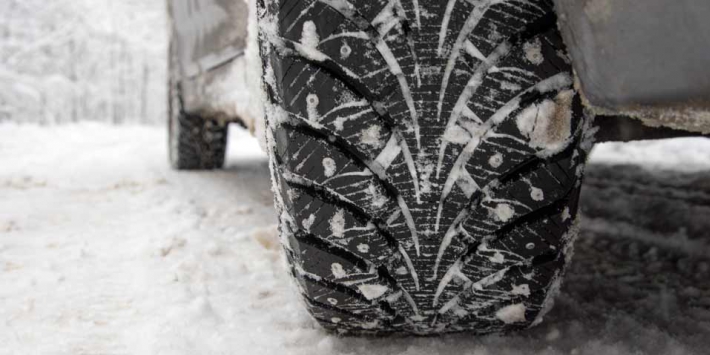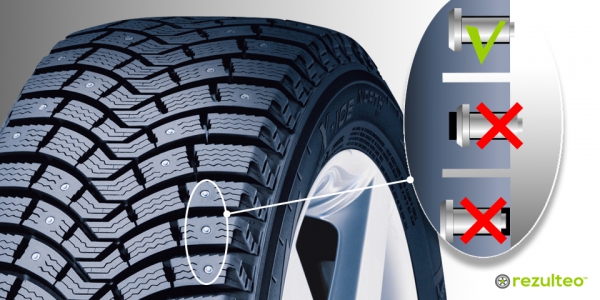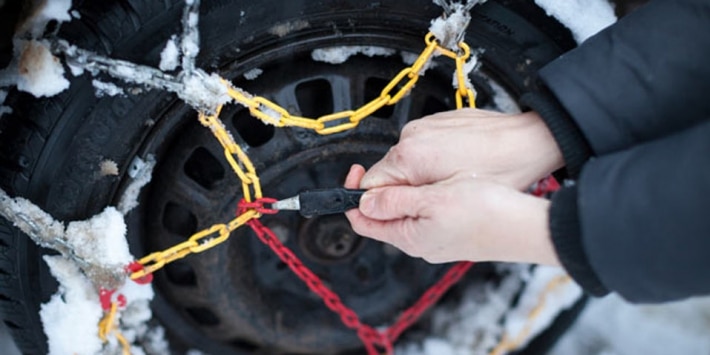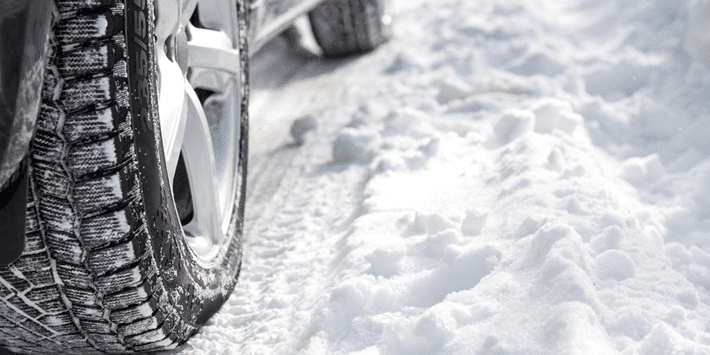In this guide, we tell you all you need to know about studded and studdable tyres: their use, compliance with regulations, maintenance differences and the precautions to be taken when fitting this type of tyre.

When should you use studded tyres?
A studded tyre is a Nordic tyre with metal studs on its tread. Like spikes on the sole of a shoe, these studs allow the tyre to grip the road in icy or snowy conditions.
However, these tyres are not suitable for use on tarmac. As well as damaging the road surface and contributing to air pollution by dispersing particles of asphalt, studded tyres are noisy and wear quickly as soon as they are used on asphalt surfaces. They also provide very poor grip in wet conditions.
Therefore, studded tyres should only be used on roads covered in ice or packed snow in countries where winters are particularly harsh and in certain mountain areas. Outside of these conditions, it is strongly recommended not to use them.
What are the regulations for studded tyres?
In the UK, there is no law prohibiting studded tyres, but they are unlikely to be suitable for most British motorists since they can only be used on completely snow-covered roads, and you risk being fined for damaging the road surface by using them on a clear road.
Studded tyre, studdable tyre: what’s the difference?
Unlike a studded tyre with fixed studs, the studdable tyre has small holes moulded in the tread where removable studs can be added. Typically, there are between 80 and 100 holes per tyre. In practice, these tyres are seldom used (with the exception of a few commercial vehicles). A special tool is used for studding the tyres. Once the tool is removed, the compound retracts and holds the stud in place. A studdable tyre must be run-in after fitting studs (60 miles at approximately 30 mph) so that the lubricant is removed from the tread.
Using a studdable tyre without its studs is of little or no real value in winter conditions since it loses its performance compared with a regular winter tyre or Nordic tyre.
How to use a studded tyre?
If you fit studded tyres, don’t forget that new studded tyres have a run-in indicator which disappears once the tyres are correctly run-in. During this phase, which corresponds to driving about 300 miles, it is recommended to drive smoothly, avoiding any hard braking and acceleration.

For even wear, studded tyres must be rotated regularly, either at the start of each season, or every 5000 miles. You can then change the front and rear tyres on the same driving side or, in the event of wear caused by the specific profile of roads, rotate the wheels from one side to the other to balance the wear. In any case, the rolling direction of a studded tyre must never be changed when rotating tyres.




